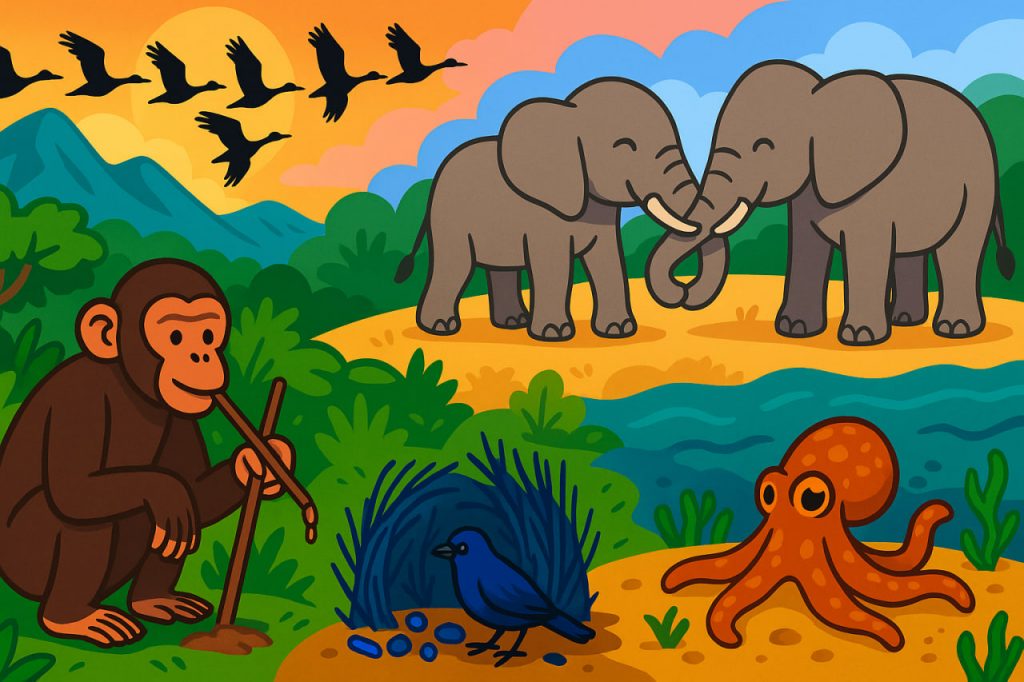The natural world is full of mysteries, and some of the most astonishing are found in the way animals behave. Across every continent and in every ecosystem, creatures of all sizes display unique, sometimes mind-bending actions. These wonders of animal behavior help them survive, communicate, find food, and even care for others in surprising ways.
Migration Across Thousands of Miles
One of the most remarkable animal behaviors is migration. Every year, millions of animals travel thousands of kilometers in search of food, warmer climates, or breeding grounds. Birds like the Arctic tern fly from the North Pole to the South Pole and back. Wildebeests in Africa migrate in huge herds across the plains. Sea turtles return to the same beach where they were born, decades later, to lay eggs.
This behavior is driven by instinct, environmental signals, and sometimes Earth’s magnetic field. Scientists are still studying how animals navigate such long distances with such accuracy.
Tools and Problem Solving in the Wild
Some animals use tools, which was once thought to be a uniquely human trait. Chimpanzees strip leaves from sticks to fish for termites. Crows bend wires into hooks to retrieve food. Sea otters crack shellfish open using rocks. These actions show intelligence and the ability to solve problems—proof of cognitive behavior in animals.
In some species, such as dolphins and elephants, cooperation and memory allow them to perform complex tasks, communicate with symbols, and even show signs of self-awareness.
Social Bonds and Altruism
Animals also form strong social bonds. Wolves hunt in packs with clearly defined roles. Elephants mourn their dead and help injured members of the herd. Vampire bats share food with others that haven’t fed, increasing their chances of survival in the future.
Such behaviors reflect more than survival instincts—they hint at empathy, loyalty, and even emotional intelligence.
Defensive Tricks and Mimicry
To avoid predators, animals have evolved fascinating defense mechanisms. Some lizards detach their tails to escape danger. The octopus can change both its color and shape to blend in with the seafloor. Some butterflies mimic the appearance of toxic species to fool predators—a strategy called Batesian mimicry.
These adaptive behaviors increase survival chances and show the power of natural selection in action.
Unusual Mating Rituals
Courtship among animals can be incredibly theatrical. Male birds-of-paradise perform elaborate dances with bright feathers. Bowerbirds build intricate structures decorated with colorful objects to impress females. Fireflies use rhythmic light patterns to attract mates. These behaviors are not only beautiful to witness, but they also reveal the importance of sexual selection in evolution.
Glossary
- Migration – Long-distance movement of animals for survival or reproduction.
- Cognitive behavior – Actions that involve thinking, learning, or using tools.
- Social bonds – Relationships between animals that include cooperation and care.
- Batesian mimicry – When a harmless species imitates a dangerous one for protection.
- Sexual selection – Evolutionary pressure based on traits that attract mates.


